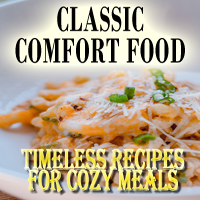


Striking The Right Balance In Modern Life

In today's fast-paced world, the battle between convenience and quality is a recurring dilemma that individuals grapple with in various aspects of their lives, from food choices to product purchases and even lifestyle decisions. The constant pursuit of convenience, often at the expense of quality, raises questions about the impact on our overall well-being and satisfaction. To make informed choices, we must explore this dichotomy and understand the delicate balance between the two.
The Convenience Craze
The allure of convenience is undeniable. It saves time, streamlines our daily routines, and offers immediate gratification. It's the reason why fast-food chains thrive, online shopping has become a retail giant, and instant messaging has eclipsed traditional communication methods. The convenience craze often stems from our busy lives and the desire to simplify tasks and reduce stress.
Quality As A Cornerstone
On the other hand, quality is an essential aspect of life that affects our satisfaction and long-term well-being. Whether it's the quality of the food we eat, the products we use, or the relationships we foster, the intrinsic value often trumps the allure of convenience. Quality provides lasting enjoyment and a sense of fulfillment.
The Food Conundrum
One area where convenience vs. quality is palpable is in our food choices. Fast food and processed meals are convenient and quick, but they often lack the nutritional value and flavors of freshly prepared, high-quality ingredients. Overindulging in convenience foods can lead to health problems, while a commitment to quality, fresh, and unprocessed foods can promote well-being and a better relationship with what we eat.
Balancing Act
Striking the right balance between convenience and quality is the key to navigating the challenges of modern life successfully. It involves making conscious choices that prioritize quality without sacrificing convenience entirely. Here's how:
Plan Ahead: Planning can make quality more convenient. By scheduling time for preparing meals, organizing tasks, or selecting products thoughtfully, you can experience the best of both worlds.
Education: Understanding the trade-offs between convenience and quality can guide your decision-making. Invest time in learning about the products you consume, and you'll be better equipped to make choices that align with your values.
Mindful Consumption: Be mindful of the choices you make and their long-term consequences. Consider how prioritizing quality can lead to a more fulfilling and satisfying life.
Seek Alternatives: When possible, opt for convenient alternatives that maintain quality. For example, ready-to-eat salads at a local market can be a convenient and healthy choice over fast food.
Time Management: Efficient time management can free up time for you to enjoy quality experiences. By organizing your schedule, you can make room for leisure, self-care, and quality moments.
The convenience vs. quality dilemma is an enduring aspect of modern life. While convenience may offer immediate gratification, quality often has a more profound and lasting impact on our lives. Striking the right balance requires conscious decision-making, thoughtful planning, and a willingness to invest in the things that truly matter. By valuing quality alongside convenience, individuals can live a more fulfilling and satisfying life that encompasses the best of both worlds.
Crafting The Perfect Liquid Symphony
 Latte Art: A Visual Symphony
Latte Art: A Visual Symphony
Latte art, the most recognizable form of espresso artistry, is a visual symphony that unfolds in your cup. Baristas use steamed milk to create intricate designs on the surface of espresso-based beverages, such as lattes and cappuccinos. Hearts, tulips, rosettes, and swans are just a few of the designs that baristas can craft with a steady hand and a keen eye.
Creating latte art is a delicate process that requires the perfect balance of milk and espresso. The milk must be steamed to the right temperature and frothed to achieve the ideal microfoam. The barista then pours the milk into the espresso, using a combination of pouring technique and wrist movement to shape the design. The result is not only visually stunning but also enhances the overall coffee-drinking experience.
Espresso Machine Mastery
Behind every visually striking latte art design lies a skilled barista who has mastered the espresso machine. The espresso machine, with its precise control over temperature and pressure, is the conductor's wand in this symphony of flavors and aesthetics. Baristas adjust variables such as grind size, shot duration, and water temperature to ensure the espresso shot's flavor is in perfect harmony with the milk and the art that adorns it.
The Intersection Of Science And Art
Espresso artistry is a unique intersection of science and art. Baristas must understand the chemical reactions that occur during coffee extraction, the physics of milk frothing, and the principles of fluid dynamics. This scientific foundation, combined with creativity and practice, allows them to consistently create visually stunning and delicious drinks.
A Key To Health And Enjoyment
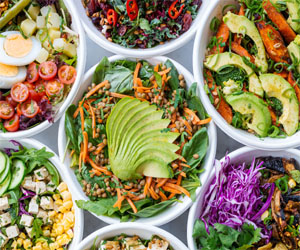 Preventing Dietary Deficiencies: A monotonous diet that lacks variety can lead to nutritional deficiencies. For instance, relying solely on a narrow selection of foods may result in inadequate intake of specific nutrients like vitamin C, calcium, or fiber. Over time, such deficiencies can contribute to health problems. By diversifying your diet, you reduce the risk of missing out on these critical nutrients.
Preventing Dietary Deficiencies: A monotonous diet that lacks variety can lead to nutritional deficiencies. For instance, relying solely on a narrow selection of foods may result in inadequate intake of specific nutrients like vitamin C, calcium, or fiber. Over time, such deficiencies can contribute to health problems. By diversifying your diet, you reduce the risk of missing out on these critical nutrients.
Enhancing Taste And Satisfaction: Food variety doesn't just benefit your health; it also elevates your culinary experience. A diet rich in diverse flavors and textures can make every meal a delightful adventure. Savoring different foods stimulates your taste buds and keeps meals exciting and enjoyable. It can prevent food boredom and discourage overindulgence in less nutritious, but more familiar, options.
Cultural Exploration: Exploring a variety of foods exposes you to different culinary traditions and cultural practices. This exploration can be a delicious way to learn about diverse cultures, fostering a deeper appreciation for the richness and diversity of the world. It also encourages an understanding of the importance of cultural food heritage.
Diverse Nutritional Profiles: Different foods have different nutritional profiles. For instance, leafy greens provide a wealth of vitamins and minerals, while whole grains offer fiber and sustained energy. Lean proteins like fish and poultry are rich in essential amino acids. By incorporating all of these into your diet, you ensure a holistic approach to nutrition that supports all aspects of health.
A Recipe For Health And Convenience
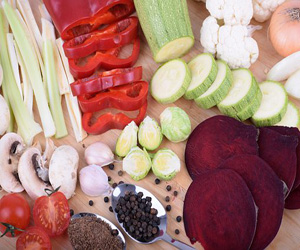 Meal planning is a culinary skill that has grown in importance over the years, offering numerous benefits for individuals and families. It involves preparing a strategy for what to eat, how to shop, and how to prepare your meals in advance. This proactive approach to food management not only makes life easier but also has profound implications for health, nutrition, and overall well-being.
Meal planning is a culinary skill that has grown in importance over the years, offering numerous benefits for individuals and families. It involves preparing a strategy for what to eat, how to shop, and how to prepare your meals in advance. This proactive approach to food management not only makes life easier but also has profound implications for health, nutrition, and overall well-being.
The Basics Of Meal Planning
Meal planning is a systematic approach to deciding what to eat and when. It typically involves:
Menu Creation: You select the dishes and recipes you'd like to prepare for a set period, whether it's for a week, two weeks, or a month.
Ingredient List: Once your menu is set, you compile a list of all the ingredients you'll need for those meals.
Shopping: Armed with your ingredient list, you go shopping for the items you don't have on hand.
Preparation: You then prepare some components of your meals in advance, like chopping vegetables, marinating proteins, or cooking grains, to streamline cooking during the week.
Elevating Your Culinary Experience
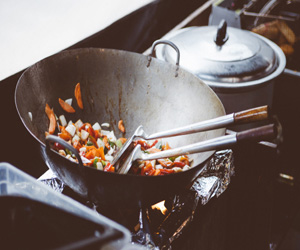 Time Efficiency: One of the most significant benefits of simplified cooking is the time it saves. By using shortcuts, pre-prepped ingredients, and easy-to-follow recipes, you can have a tasty meal on the table in no time. This is particularly valuable for busy individuals and families with packed schedules.
Time Efficiency: One of the most significant benefits of simplified cooking is the time it saves. By using shortcuts, pre-prepped ingredients, and easy-to-follow recipes, you can have a tasty meal on the table in no time. This is particularly valuable for busy individuals and families with packed schedules.
Minimal Ingredients: Simplified cooking often relies on a shorter list of ingredients. You don't need a pantry full of exotic spices and specialty items. Instead, you can create flavorful dishes with basic staples, reducing both cost and clutter in your kitchen.
Easy Cleanup: With fewer pots, pans, and utensils involved, cleanup becomes a breeze. Many simplified recipes are designed for one-pot cooking, reducing the time spent on dishwashing and kitchen tidying.
Versatility: Simplified cooking doesn't mean boring or repetitive meals. With some creativity, you can adapt simple recipes to your tastes by adding or substituting ingredients. This flexibility encourages experimentation and the discovery of new favorite dishes.
Health Benefits: Many simplified cooking techniques emphasize fresh, whole ingredients. You'll have better control over what goes into your meals, making it easier to create nutritious options that fit your dietary preferences.
Health And Dietary Considerations
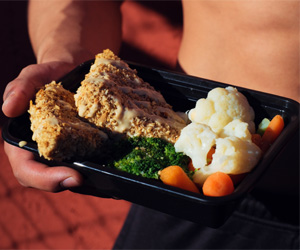 Pasta: Traditional wheat-based pasta is a staple of many diets.
Pasta: Traditional wheat-based pasta is a staple of many diets.
Cereals: Wheat is a common ingredient in breakfast cereals.
Flour: Wheat flour is used in baking, cooking, and as a thickening agent in many recipes.
Sauces And Gravies: Some sauces and gravies are thickened with wheat flour.
Beer: Many beers are brewed using wheat, making them unsuitable for those following a wheat-free lifestyle.
Motivations For A Wheat-Free Lifestyle
Celiac Disease: Celiac disease is an autoimmune disorder in which the ingestion of wheat triggers an immune response, leading to damage in the small intestine. Individuals with celiac disease must follow a strict wheat-free diet to manage their condition.
Wheat Allergies: Some individuals experience allergic reactions to wheat, which can range from mild to severe and can include hives, digestive distress, or anaphylaxis.
Non-Celiac Wheat Sensitivity: Non-celiac wheat sensitivity is characterized by adverse reactions to wheat without the autoimmune response seen in celiac disease. Symptoms may include digestive discomfort, fatigue, and headaches.
More Than Just Food For The Body
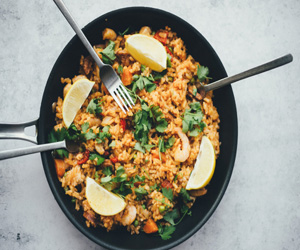 Nourishing dishes are characterized by their ability to provide comfort and solace. They are often the recipes that offer a warm embrace during challenging times, a source of solace when we seek refuge from the chaos of the world. Whether it's a bowl of hearty chicken soup on a cold winter day, a plate of creamy macaroni and cheese, or a fragrant curry simmering on the stove, these dishes provide more than just sustenance; they offer a sense of well-being.
Nourishing dishes are characterized by their ability to provide comfort and solace. They are often the recipes that offer a warm embrace during challenging times, a source of solace when we seek refuge from the chaos of the world. Whether it's a bowl of hearty chicken soup on a cold winter day, a plate of creamy macaroni and cheese, or a fragrant curry simmering on the stove, these dishes provide more than just sustenance; they offer a sense of well-being.
At the heart of nourishing dishes is the concept of emotional nourishment. These are the meals that evoke feelings of nostalgia, family, and home. They remind us of simpler times, of the loving hands that prepared them, and of the comforting embrace of familiar flavors. Nourishing dishes go beyond filling the belly; they fill the heart and the soul.